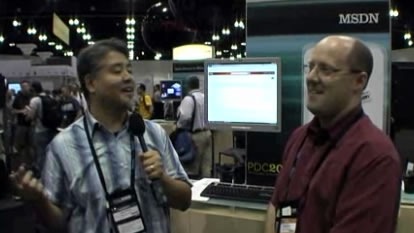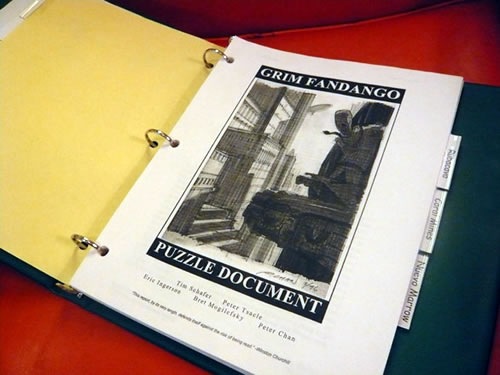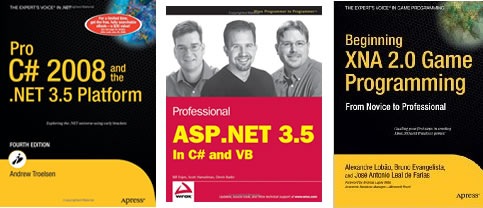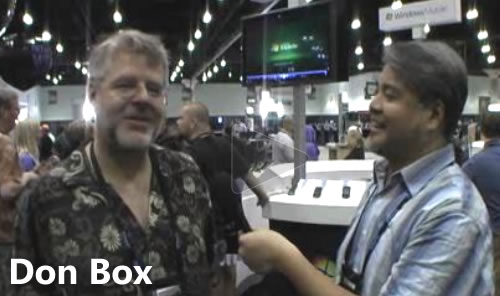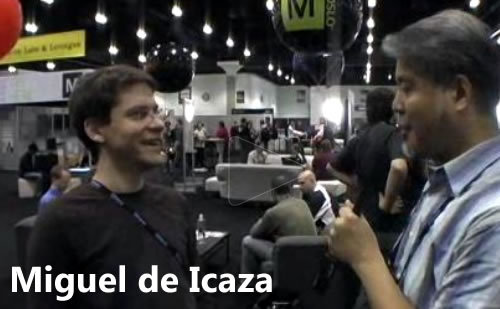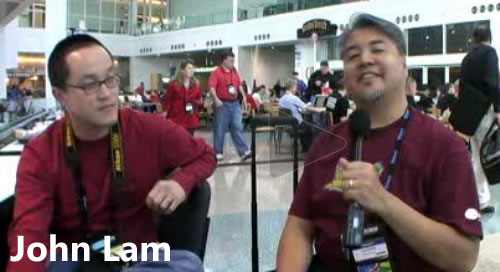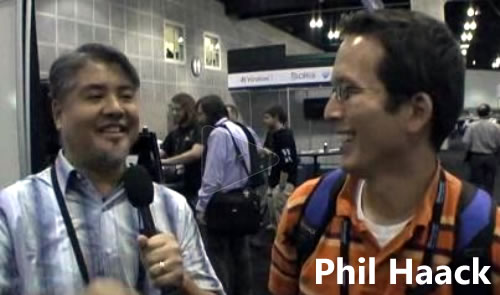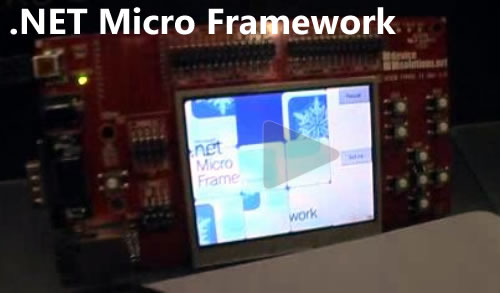 This article was written by Bob Muglia, President of the Server and Tools division at Microsoft. It was posted on the Silverlight Team’s blog, and I’m reposting it here verbatim.
This article was written by Bob Muglia, President of the Server and Tools division at Microsoft. It was posted on the Silverlight Team’s blog, and I’m reposting it here verbatim.
Last week, we held our PDC conference on the Microsoft campus in Redmond, Wash. We also streamed it online using Silverlight (with both live and on-demand sessions). Already, more than 100,000 developers have watched the event, and the feedback on the streaming experience has been phenomenal. If you haven’t had a chance to watch the sessions yet, I encourage you to do so: http://microsoftpdc.com
During the conference, I gave an interview where, among other things, I talked about the great work we’re doing with Silverlight – in particular, support for Windows Phone 7, which we featured heavily at the conference. The interview was accurately reported. I understand that what I said surprised people and caused controversy and confusion. As this certainly wasn’t my intent, I want to apologize for that. I’d like to use this post to expand on what I said, and talk about the very important role Silverlight has going forward.
In the interview, I said several things that I want to emphasize:
- Silverlight is very important and strategic to Microsoft.
- We’re working hard on the next release of Silverlight, and it will continue to be cross-browser and cross-platform, and run on Windows and Mac.
- Silverlight is a core application development platform for Windows, and it’s the development platform for Windows Phone.
We haven’t yet publically announced a launch date for the next release of Silverlight, but we’ll talk more about it in the coming months.
Last week, we released some important updates to Silverlight 4, which shipped only six months ago and included major new features and tooling capabilities. Last week’s updates included improvements to WCF RIA Services, as well as the new Portable Library project – making it easier to share assemblies across SL Desktop, SL Phone, WPF and .NET on the server. John Papa delivered a PDC session on building business apps with Silverlight 4, and Shawn Burke delivered a PDC session on the portable library project. I recommend that you take a look at both of these.
Silverlight Strategy
I said, “Our Silverlight strategy and focus going forward has shifted.” This isn’t a negative statement, but rather, it’s a comment on how the industry has changed and how we’re adapting our Silverlight strategy to take advantage of that.
Below are some of the trends we’re tracking and optimizing around.
Customers are demanding the richest possible client experiences, and developers are increasingly looking to build premium, tailored experiences optimized for specific devices. Silverlight provides the richest way to build Web-delivered client apps. In particular, with Silverlight 4, we invested in enabling enterprise application development and now provide an outstanding platform to build rich business applications – both inside and outside the browser.
Customers want to be able to deliver client experiences that are optimized for specific form factors. Silverlight provides a rich UI framework that enables smooth animations and lends itself very well to touch input and embedded devices. At the PDC last week, we spent a lot of time talking about Windows Phone 7 and how Silverlight provides a great developer platform for creating apps for it. With the U.S. launch just days away, already we have more than 1,000 Silverlight apps built for Windows Phone, and consumers of the phone will be able to purchase these apps through an integrated marketplace built into each device. Recently, we’ve also demonstrated Silverlight apps running on Windows Embedded, and Silverlight is a critical component of our three-screen strategy.
Media delivery across the Internet continues to accelerate dramatically. Customers want HD, studio quality, premium media content. Silverlight has and will continue to be a pioneering technology that makes it possible to deliver the best media experiences anywhere. Whether it’s the Olympics, Netflix, or many other media experiences, we have and will continue to invest in it. Silverlight and IIS Media Services are the choice for premium media experiences with features like HTTP adaptive streaming, DECE-approved content protection, and offline media applications. In addition, IIS Smooth Streaming enables media delivery to a wide variety of devices, including devices where Silverlight isn’t supported.
Lastly, there has been massive growth in the breadth and diversity of devices made by a wide variety of vendors providing both open and closed systems. When we started Silverlight, the number of unique/different Internet-connected devices in the world was relatively small, and our goal was to provide the most consistent, richest experience across those devices. But the world has changed. As a result, getting a single runtime implementation installed on every potential device is practically impossible. We think HTML will provide the broadest, cross-platform reach across all these devices. At Microsoft, we’re committed to building the world’s best implementation of HTML 5 for devices running Windows, and at the PDC, we showed the great progress we’re making on this with IE 9.
The purpose of Silverlight has never been to replace HTML, but rather to do the things that HTML (and other technologies) can’t, and to do so in a way that’s easy for developers to use. Silverlight enables great client app and media experiences. It’s now installed on two-thirds of the world’s computers, and more than 600,000 developers currently build software using it. Make no mistake; we’ll continue to invest in Silverlight and enable developers to build great apps and experiences with it in the future.

